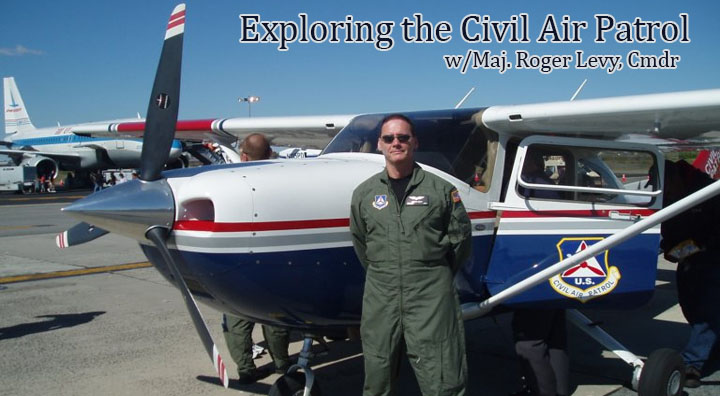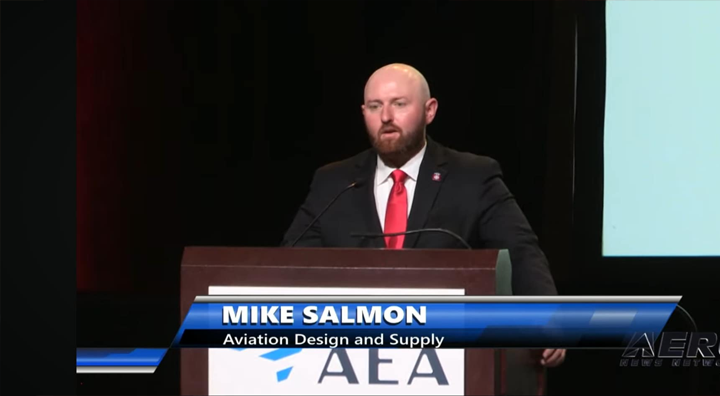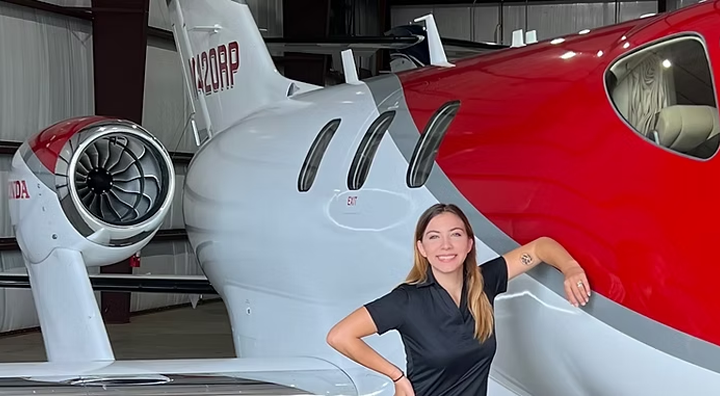Soaring with Purpose: Inside the NYC Civil Air Patrol with Major Roger Levy
By Shawn Staerker
Ever dreamed of flying through New York City’s skyline at 1,500 feet, eye-level with the Freedom Tower? For Major Roger Levy, commander of the NYC Civil Air Patrol, that thrill “never gets old” — and it’s just one of the many incredible experiences that come with being part of America’s premier volunteer aviation organization.
From Aviation Dreams to Flight Reality
Like many pilots, Levy’s fascination with flight began early. “Ever since I was a little kid, as far back as I can remember, I was fascinated by things that moved and carried people, and airplanes especially,” he recalls. His passion ran so deep that he would buy copies of the FAA’s Airplane Flying Handbook just for fun reading — long before he ever learned to fly.
When life finally permitted him to pursue his dream of flight, Levy discovered the Civil Air Patrol and immediately recognized it as “an amazing thing, a way to use my aviation skills for public good.” Nearly 20 years later, he leads the organization’s New York City operations.
The journey to commander wasn’t necessarily planned. As an attorney and aviator, Levy has always been “solution-oriented,” looking for problems and figuring out how to solve them. That approach naturally led to leadership roles within the NYC Civil Air Patrol, with responsibilities “snowballing” as he proved his abilities.
Today, he applies aviation principles to his leadership style. “In flying, planning is everything. You live and die by your pre-flight preparation and by your flight planning,” Levy explains. But just as importantly, he recognizes that flexibility is crucial: “Mike Tyson once famously said everyone has a plan until they get punched in the face… You create a flight plan, it looks great on paper, you get your clearance, first thing you do is you get a reroute. You have to adapt.”
Beyond Search and Rescue: CAP’s Three-Part Mission
While the Civil Air Patrol is perhaps best known for search and rescue operations, that’s just one aspect of its three core missions: emergency services, aerospace education, and cadet programs.
In emergency services, CAP teams respond when aircraft go down or disasters strike. After 9/11, CAP aircraft were among the only civilian planes allowed in the sky, taking reconnaissance photos of Ground Zero. They performed similar roles after Hurricane Sandy and the Deepwater Horizon oil spill, helping authorities assess damage and plan recovery efforts.
The aerospace education mission focuses on promoting awareness of aviation’s importance to national security and everyday life. This includes internal education for members and extensive resources for K-12 educators to help students learn about aviation and aerospace.
But for Levy, it’s the cadet programs that represent “the pride of what we do.” These programs train future leaders not just in aerospace knowledge but in becoming “good, responsible citizens and members of their community.”
Flying Over the Big Apple
Operating aircraft around New York City presents unique challenges. The airspace is notoriously complex, with strict rules about where and how aircraft can fly. Levy describes the “little sliver of airspace tunnel” along the Hudson River where pilots can fly without talking to controllers — just 300 feet of vertical space between 1,000 and 1,300 feet above ground.
“The first time I flew up the Hudson River at low altitude alone, I scared myself pretty good,” Levy admits. Now he prefers to fly higher at 1,500 or 2,000 feet, staying in communication with air traffic controllers the whole way.
Despite the challenges, pilots with the NYC Civil Air Patrol become experts at navigating these constraints. “It’s all about training, training, and more training,” Levy emphasizes. The procedures have been refined over time, sometimes in response to accidents, to ensure everyone from airliners to police helicopters to CAP aircraft can safely share the sky.
High-Tech “Low and Slow”
The Civil Air Patrol operates “the largest fleet of single-engine aircraft in the world,” primarily Cessna 172s and 182s. These aren’t the fastest planes in the sky, but they’re perfect for CAP’s missions.
“For what we do, you don’t need a rocket screaming along at 300 knots at 20,000 feet,” Levy explains. “But 1,000, 1,500 feet off the ground at 100 knots, 80 knots, giving our air crew members the opportunity to observe, find, and photograph — that’s what our fleet is optimized for.”
The high-wing design of these Cessnas provides an unobstructed view downward, ideal for search and photography missions. And while they may fly “low and slow,” many CAP aircraft boast technology rivaling business jets, including cutting-edge infrared equipment and sophisticated “glass cockpit” displays.
Inspiring the Next Generation
How does the NYC Civil Air Patrol spark interest in aviation? The most powerful tool is their orientation flight program, where cadets get to experience flight firsthand — and even take the controls.
“There’s nothing like seeing the sense of amazement in a cadet’s eyes when the pilot and commander of the aircraft says, ‘Here you go, your airplane,'” Levy says. That hands-on experience with the principles of flight creates lasting impressions.
Beyond flying, CAP organizes trips to aviation landmarks like the US Air Force Museum at Wright-Patterson Air Force Base. They’ve arranged overnight stays on the USS Intrepid and visits to airport control towers and radar facilities, allowing cadets to interact with aviation professionals.
New York City’s rich aviation history provides endless opportunities for these educational experiences. And for those seeking deeper involvement, CAP offers specialized programs like their national seminar on business aviation, where selected cadets from around the country spend a week learning about aviation’s commercial aspects.
Taking Flight with CAP
For those interested in joining Civil Air Patrol, Levy recommends starting at their national website (gocivilairpatrol.com) to find local squadrons. “Visit a couple before you select one to join,” he advises, since each unit has its own personality while executing the same core missions.
When asked about his favorite flying memories, Levy shares two standouts: circling over Niagara Falls at 1,000 feet, seeing the natural wonder from a breathtaking aerial perspective, and those Manhattan skyline flights along the Hudson River that make him “feel like Superman every time.”
Want to hear more about Major Levy’s experiences with the Civil Air Patrol and flying around NYC? Listen to his full interview on The Future in Flight Podcast with Shawn Staerker, where he shares more insights about aviation, leadership, and service opportunities for youth and adults alike.



